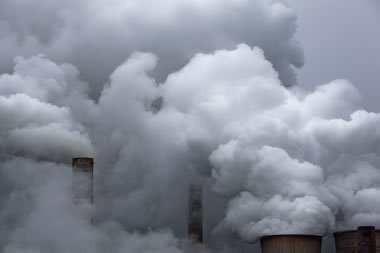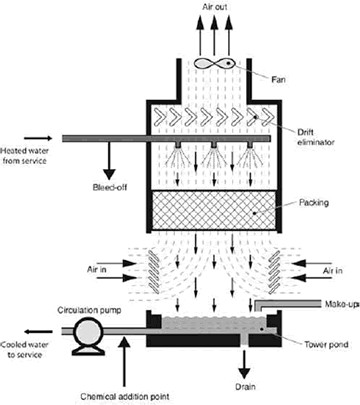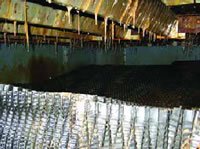Legionnaires’ Disease at Chemical Sites Linked to Poor Legionella Control in Cooling Towers
 Outbreaks of Legionnaires’ disease linked to poor management of wet cooling towers still occur; often leading to prosecutions by the Health & Safety Executive…. for example… in the West Midlands and Cumbria. August 2006 saw 127 reported cases of Legionnaire’s disease, a twofold increase on the figure for August 2005.
Outbreaks of Legionnaires’ disease linked to poor management of wet cooling towers still occur; often leading to prosecutions by the Health & Safety Executive…. for example… in the West Midlands and Cumbria. August 2006 saw 127 reported cases of Legionnaire’s disease, a twofold increase on the figure for August 2005.
Although such a seasonal increase is normal, not so many of these outbreaks of Legionnaires’ disease were associated with foreign travel as would be expected. In addition up to the end of August 2006, there were 273 reported cases as opposed to 205 for the corresponding period in 2005.

Do you know what’s growing in your cooling tower?
During 2003-2005, the HSE inspected wet cooling tower systems at 22 Midlands chemical manufacturing sites. At up to a quarter of those sites, the following conditions were found:
- build-up of slime, algae, scale, and corrosion;
- poorly-covered ponds exposed to light and fouling;
- broken and damaged equipment.
The legionella bacterium can thrive on the warmth and nutrients provided by poor conditions in wet cooling towers and evaporative condensers.
At chemical sites, such equipment is often used intensively and round the clock.
The bacterium can survive in wind-borne water droplets which can be carried up to 2 km away from its source.
Outbreaks linked to poor management of wet cooling systems still occur; often leading to prosecutions by HSE, eg in the West Midlands and Cumbria.
Water treatment … do you:
- Use up-to-date, appropriate disinfection techniques?
- Check water quality regularly?
- Incubate dipslides properly?
- Record your remedial actions?
Cleaning and disinfection … do you:
- Clean and disinfect every 6-12 months?
- Remove the pack for cleaning?
- Fully drain during long shutdowns?
- Protect everyone in the area during cleaning?
- Ensure that cleaning procedures are site-specific and cover all risks?
- Have you got the main elements of control covered?
Legionella risk assessment … are they:
- Suitable and sufficient?
- Reviewed regularly?
- Developed with employee consultation?
Roles and responsibilities:
- Duties clearly defined for employees and contractors?
Routine checks and maintenance. Do you:
- Carry out full inspections?
- Regularly calibrate dosing pumps?
- Maintain items such as drift eliminators?
HSE’s Hazardous Installations Directorate will continue this intervention programme in all regions in 2007/2008.
Guidance on managing wet cooling systems can be found in the HSE publication Legionnaires’ disease: The control of Legionella bacteria in water systems. Approved Code of Practice and Guidance.
Where dutyholders are found to be in breach of the legislation, HSE will explore all options, including enforcement, to ensure that the duty holder does prevent or control risks.
Conditions often found by the HSE in cooling towers:
Examples of scale deposits, rust, biofilm and algal growth on packing and cooling tower interiors.
 |
 |
 |
 |
This document contains notes on good practice which are not compulsory but which you may find helpful in considering what you need to do.
© Crown copyright – Published 12/06
Legionnaires’ risk assessment
Expert legionella control assistance
For further information and expert assistance regarding legionella risk management and compliance issues call us today on 0330 223 36 86 or get in touch here … contact us


